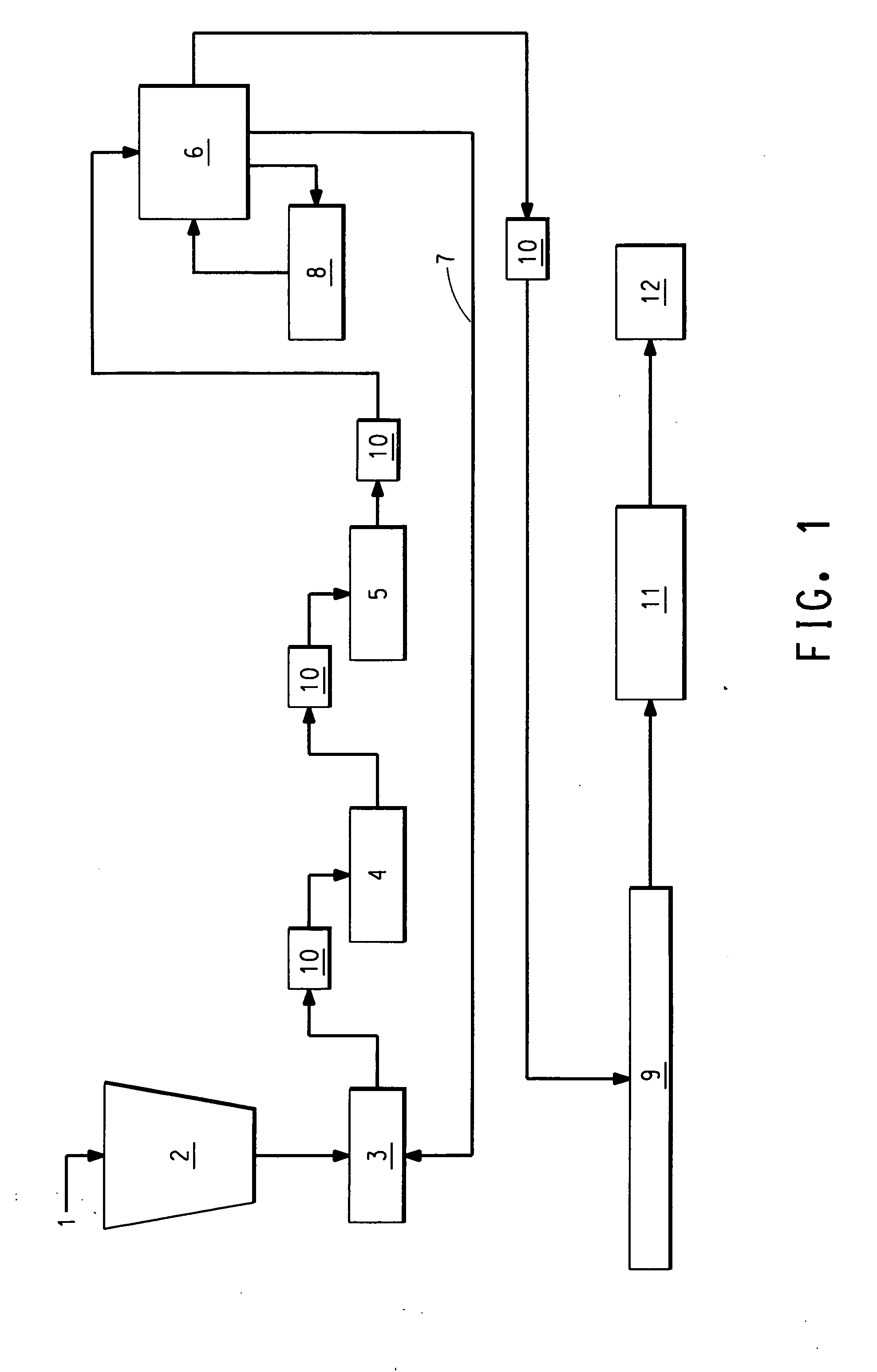Para-aramid pulp including meta-aramid fibrids and processes of making same
a technology of para-aramid and meta-aramid fibrid, which is applied in the field of para-aramid pulp, can solve the problems of asbestos replacement, high cost, and other negative attributes, and achieves the effects of improving the quality of para-aramid
- Summary
- Abstract
- Description
- Claims
- Application Information
AI Technical Summary
Problems solved by technology
Method used
Image
Examples
first embodiment
I. First Embodiment of the Inventive Process
[0059] In a first embodiment, the process for making a meta- and para-aramid pulp comprises the following steps. First, pulp ingredients are combined or added together in a container. Second, the combined pulp ingredients are mixed to a substantially uniform slurry. Third, the slurry is simultaneously refined or co-refined. Fourth, water is removed from the refined slurry.
Combining Step
[0060] In the combining step, the pulp ingredients are preferably added together in a vessel or container. The pulp ingredients include (1) meta-aramid fibrids, (2) para-aramid fiber, (3) optionally other minor additives, and (4) water.
Meta-Aramid Fibrids
[0061] The meta-aramid fibrids are added to a concentration of 10 to 90 wt % of the total solids in the ingredients, preferably 25 to 60 wt % of the total solids in the ingredients, and most preferably 25 to 55 wt % of the total solids in the ingredients. The meta-aramid fibrids preferably has an averag...
second embodiment
II. Second Embodiment of the Inventive Process
[0075] In a second embodiment, the process for making the para-aramid pulp including meta-aramid fibrids is the same as the first embodiment of the process described above with the following differences. Instead of combining all the pulp ingredients together at once, the ingredients can be added in stages. For instance, some or all of the water needed for all ingredients can be combined with either the (i) meta-aramid fibrids or the (ii) para-aramid floc. These ingredients are mixed to a first substantially uniform suspension. Then the suspension is refined. If the suspension includes meta-aramid fibrids, the refining includes shearing and / or masticating the meta-aramid fibrids. If the suspension includes para-aramid fiber, the refining includes fibrillating, cutting and masticating at least some of the para-aramid fiber to irregularly shaped fibrillated fibrous structures. Then, more water is added, if necessary, to increase the water c...
example 1
[0095] In this example, the pulp of this invention was produced from a feedstock of para-aramid fiber and meta-aramid fibrids. The para-aramid fiber was poly (para-phenylene terephthalamide) floc having a linear density of about 0.16 tex and cut length of about 6.7 mm (sold by E.I. de Pont de Nemours and Company under trademark KEVLAR® 49). The meta-aramid fibrids were prepared from poly (meta-phenylene isophthalamide) as described in U.S. Pat. No. 3,756,908, and had CSF of about 488 ml, arithmetic mean length of about 0.40 mm, length weighted mean length of about 0.77 mm, and weight weighted mean length of about 1.19 mm.
[0096] The meta-aramid fibrids were dispersed in water into a highly agitated mixing tank for about 5 minutes, then the para-aramid fiber was added to make a solids concentration of 50 wt % para-aramid fiber and 50 wt % meta-aramid fibrids and mixed for an additional 10 minutes to form a uniform, pumpable slurry with the total volume of about 156 liters and of abou...
PUM
| Property | Measurement | Unit |
|---|---|---|
| Length | aaaaa | aaaaa |
| Length | aaaaa | aaaaa |
| Length | aaaaa | aaaaa |
Abstract
Description
Claims
Application Information
 Login to View More
Login to View More - R&D
- Intellectual Property
- Life Sciences
- Materials
- Tech Scout
- Unparalleled Data Quality
- Higher Quality Content
- 60% Fewer Hallucinations
Browse by: Latest US Patents, China's latest patents, Technical Efficacy Thesaurus, Application Domain, Technology Topic, Popular Technical Reports.
© 2025 PatSnap. All rights reserved.Legal|Privacy policy|Modern Slavery Act Transparency Statement|Sitemap|About US| Contact US: help@patsnap.com



